How A Bill Becomes A Law Youtube Video
Oregon – How a Bill Becomes a Police
Laws in Oregon are created past the Oregon State Legislature. The Oregon Legislature has 2 legislative chambers – the Firm of Representatives and the Senate. There are sixty members of the House of Representatives and 30 members of the Senate. The Oregon Legislature meets for 35 days in fifty-fifty years and 160 days in odd years.
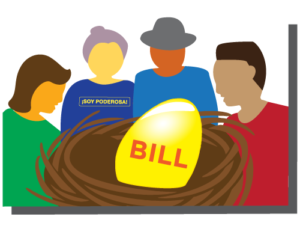 A bill is an idea for a new law, or an thought to change or get rid of an existing law. Ideas for bills tin can come up from anyone – legislators, community members, organizations, even corporations.
A bill is an idea for a new law, or an thought to change or get rid of an existing law. Ideas for bills tin can come up from anyone – legislators, community members, organizations, even corporations.
ane: Introduce a Neb
 A fellow member of the Firm of Representatives or the Senate can innovate a nib. The member who introduces the bill is called the principal sponsor.
A fellow member of the Firm of Representatives or the Senate can innovate a nib. The member who introduces the bill is called the principal sponsor.
Frontwards Together members meet with potential sponsors to share our stories, helping to inform the development of legislation as it is being created.
2. Send to Commission
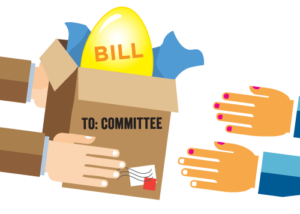 Once introduced, a beak gets assigned a number, and then the bill is sent to a committee. The House of Representatives has 13 committees and the Senate has 13 committees.
Once introduced, a beak gets assigned a number, and then the bill is sent to a committee. The House of Representatives has 13 committees and the Senate has 13 committees.
3. Commission Hears the Bill

The committee studies the nib to see if it would make a skillful law. Committees often hold hearings, where people testify in support of or in opposition to the neb. Members of the committee can suggest changes (called amendments) to the beak for the committee to consider.
Afterward listening to all of the data and proposed changes, the committee will vote on the bill. If more than half of the committee members back up the beak, it moves onto the adjacent pace. If the committee doesn't vote on the bill or the bill gets defeated in committee, information technology cannot movement on.
Frontward Together leaders and supporters share their stories by testifying at commission hearings. Folks who tin't nourish in person can submit written testimony into the record. Forrard Together supporters tin telephone call the members of the committee to express their support or share their business organisation near a bill, and we often have days of activeness to share our experiences with legislators in person.
4. Floor Action
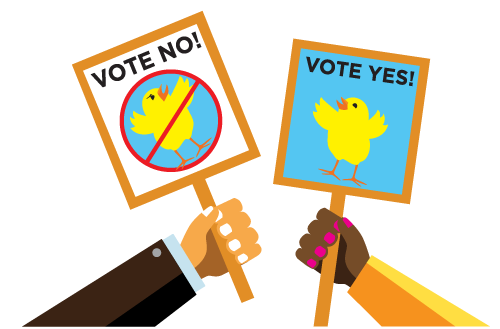 A neb that is approved by committee returns to the sleeping accommodation (Business firm or Senate) where it was introduced and is read or printed in the agenda iii times. To pass the offset reading, the nib championship is printed in the calendar (the daily printed agenda of business) or is read by the Clerk of the chamber. During the second reading, the pecker may be amended and debated on the full floor. During the third reading, members vote to pass or not pass the nib. Bills that don't pass on the third reading practise non motility on in the process.
A neb that is approved by committee returns to the sleeping accommodation (Business firm or Senate) where it was introduced and is read or printed in the agenda iii times. To pass the offset reading, the nib championship is printed in the calendar (the daily printed agenda of business) or is read by the Clerk of the chamber. During the second reading, the pecker may be amended and debated on the full floor. During the third reading, members vote to pass or not pass the nib. Bills that don't pass on the third reading practise non motility on in the process.
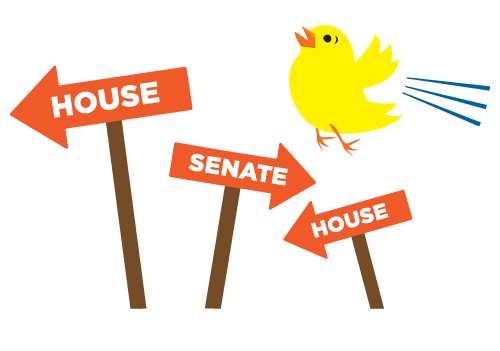 If a neb passes in the Business firm of Representatives, it goes through a like procedure in the Senate. Earlier a bill becomes constabulary, it must be approved by both chambers of the legislature. The bill must pass with the aforementioned wording in the House of Representatives and the Senate before information technology tin can become to the Governor. If the Senate apology a House bill, or vice versa, the bill must go dorsum to the original bedchamber and be approved with the amendments before proceeding.
If a neb passes in the Business firm of Representatives, it goes through a like procedure in the Senate. Earlier a bill becomes constabulary, it must be approved by both chambers of the legislature. The bill must pass with the aforementioned wording in the House of Representatives and the Senate before information technology tin can become to the Governor. If the Senate apology a House bill, or vice versa, the bill must go dorsum to the original bedchamber and be approved with the amendments before proceeding.
When a nib is existence considered on the chamber floor, Forward Together leaders participate in days of action, calling or visiting legislators to express their support or opposition to a nib. We may also show up at the Capitol building on the twenty-four hours of a floor vote to rally, speak to the media, and practice in-person storytelling with legislators.
5. Governor'due south Desk-bound
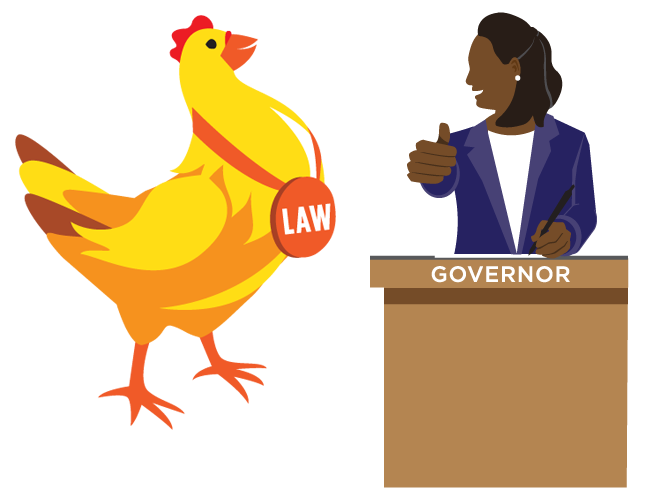
If the nib passes both chambers, it goes to the Governor for approval. The Governor has three choices:
- Governor signs the bill.
- Governor vetoes (or rejects) the neb. The House of Representatives and Senate may override the veto by a two-thirds vote of each bedchamber.
- Governor takes no action. If the Governor doesn't sign the nib, just doesn't veto it, information technology automatically becomes the law.
While a pecker is waiting for the Governor to brand a conclusion, Forward Together leaders and supporters call the Governor's office, ship emails, and participate in social media campaigns to urge the Governor to sign or veto the bill.
Well-nigh This Tool
Forward Together works to ensure all Oregon families accept the rights, recognition and resources they need to thrive. We work with women of color and trans/nonbinary individuals and their families on healthcare access, rights for all families, and building rubber communities. 1 fashion nosotros build ability is by working to alter laws and policies in Oregon.
Interested in Building Power for Our Families?
Contact Michele Ruffin at michele@forwardtogether.org.
Source: https://forwardtogether.org/tools/oregon-how-a-bill-becomes-a-law/
Posted by: jacksongoomects.blogspot.com

0 Response to "How A Bill Becomes A Law Youtube Video"
Post a Comment